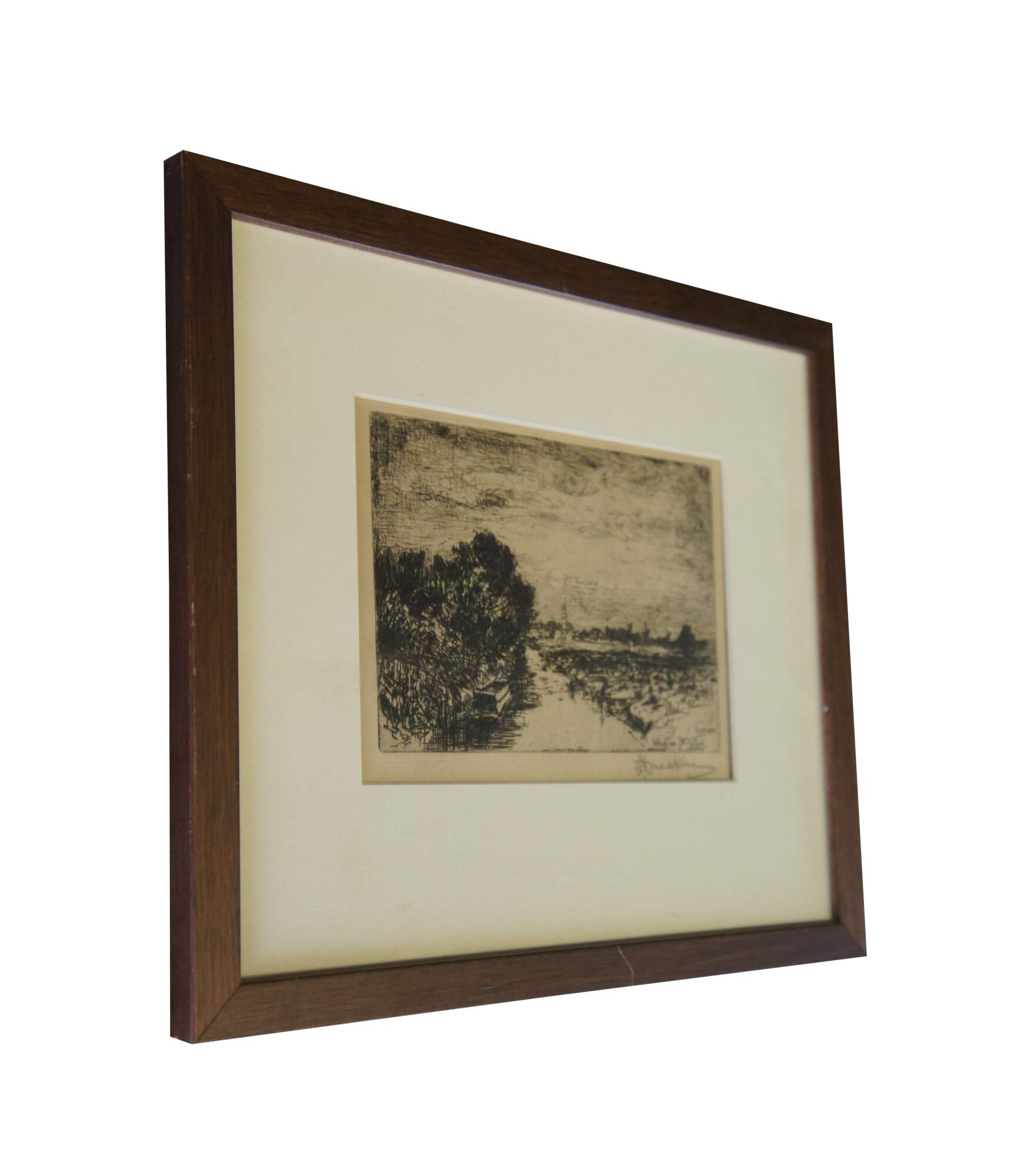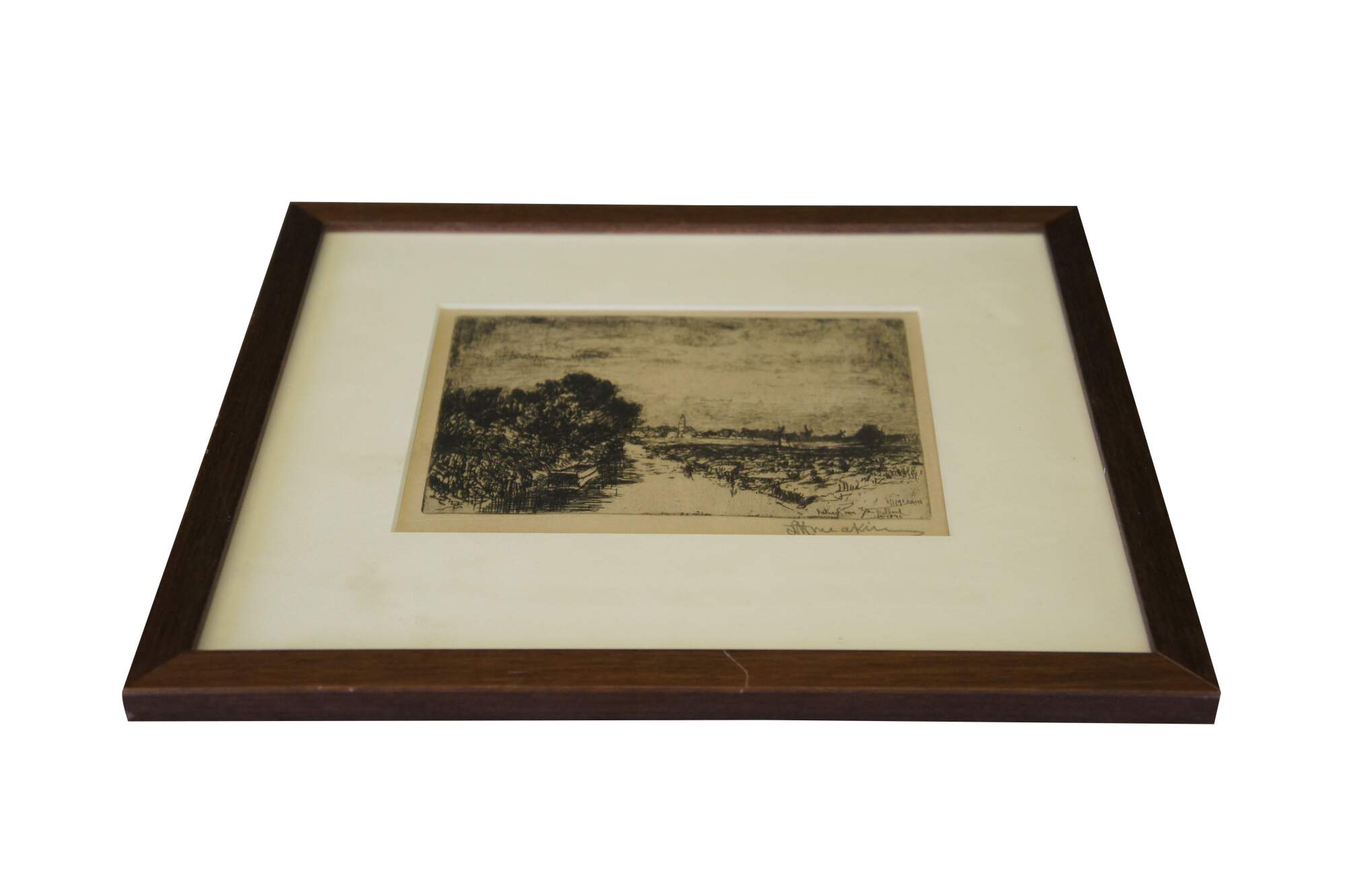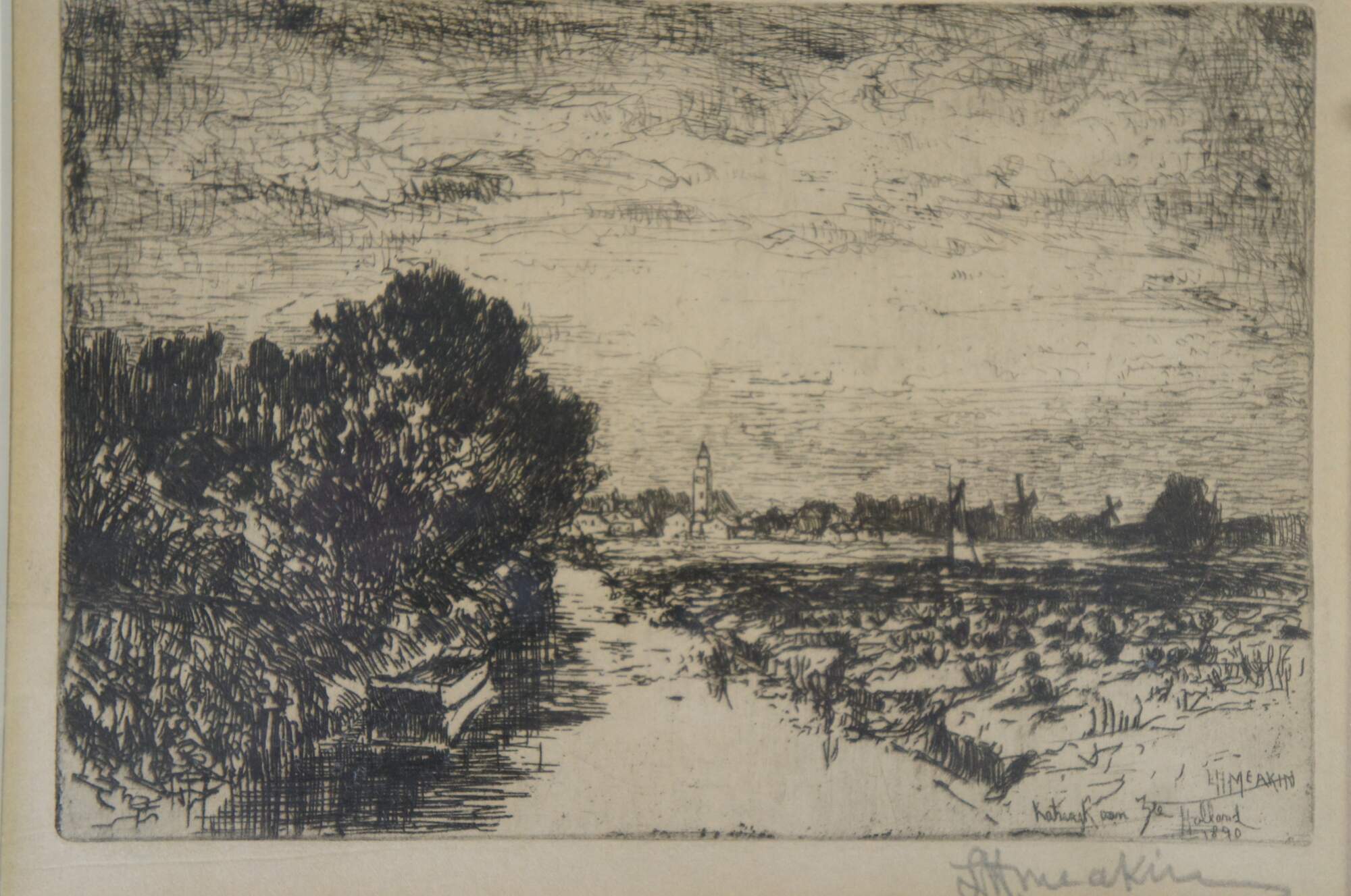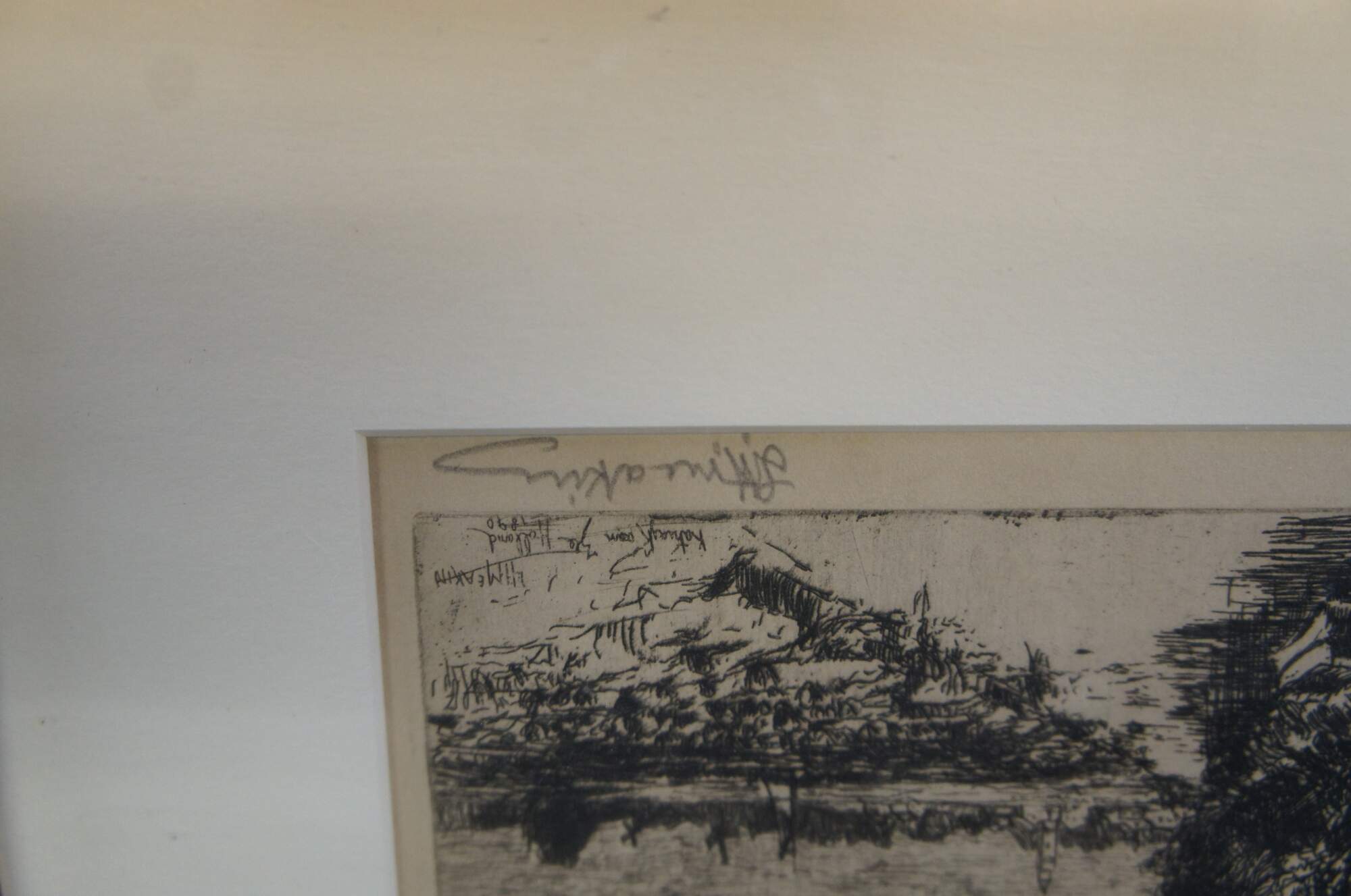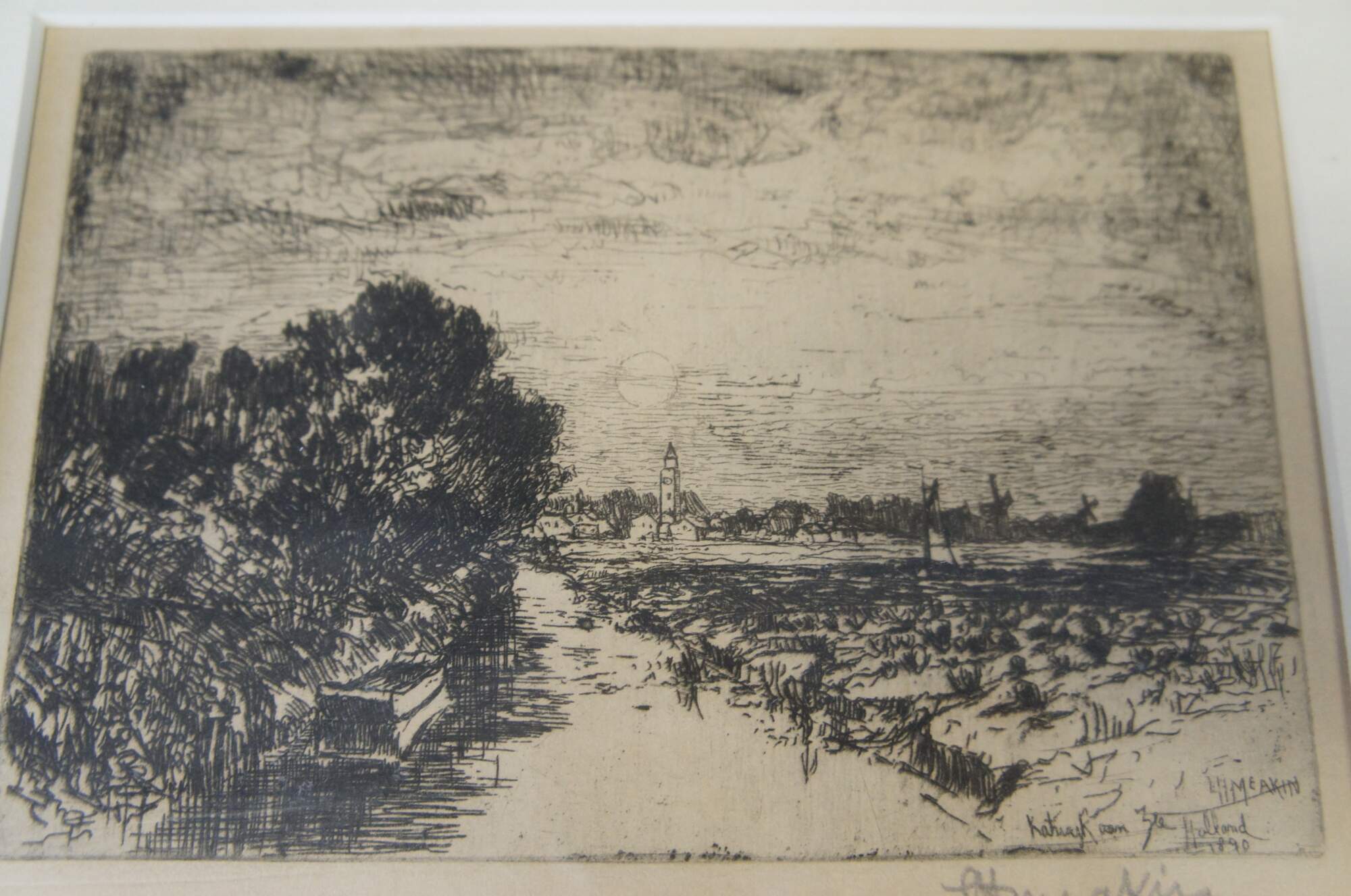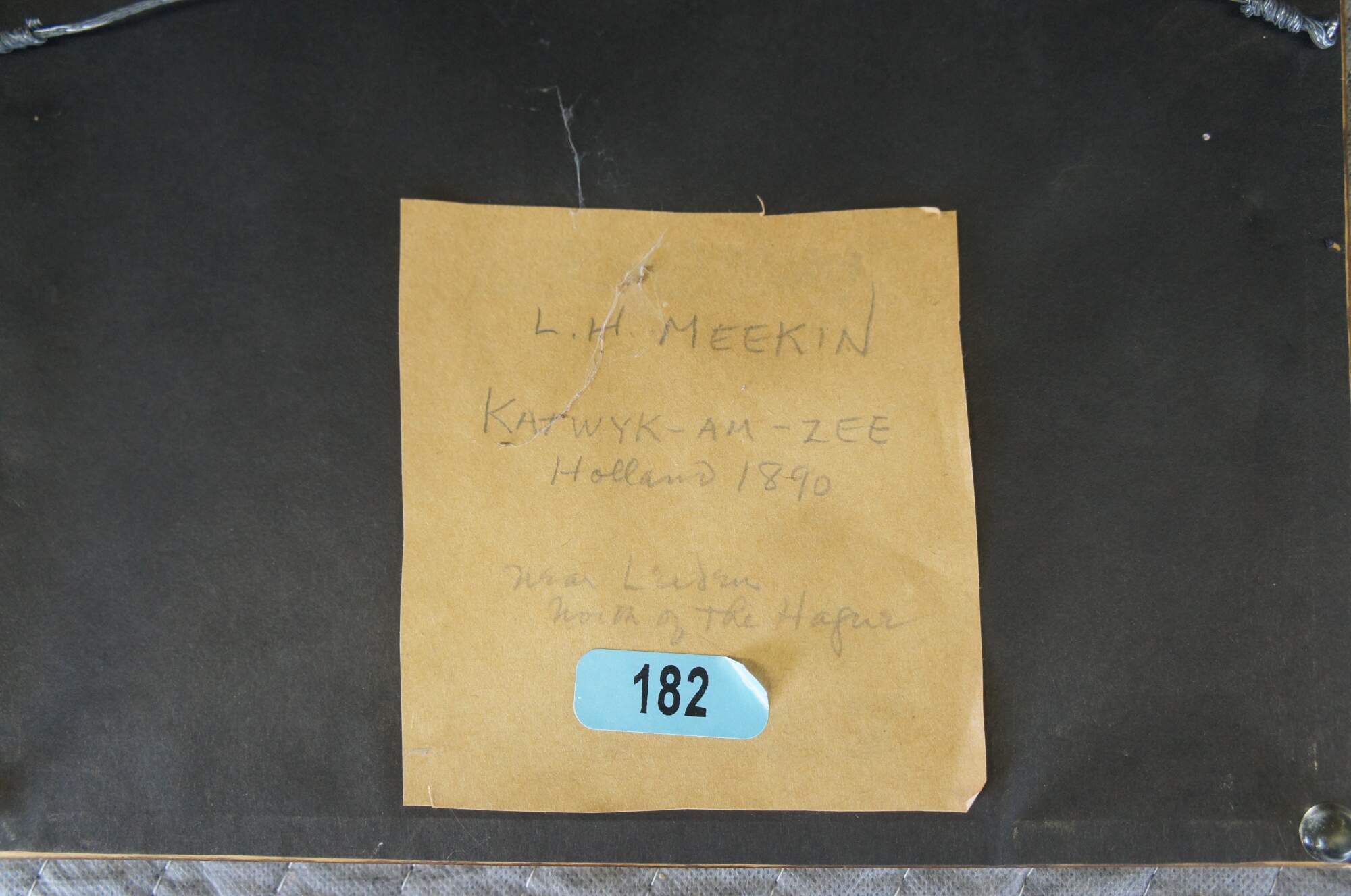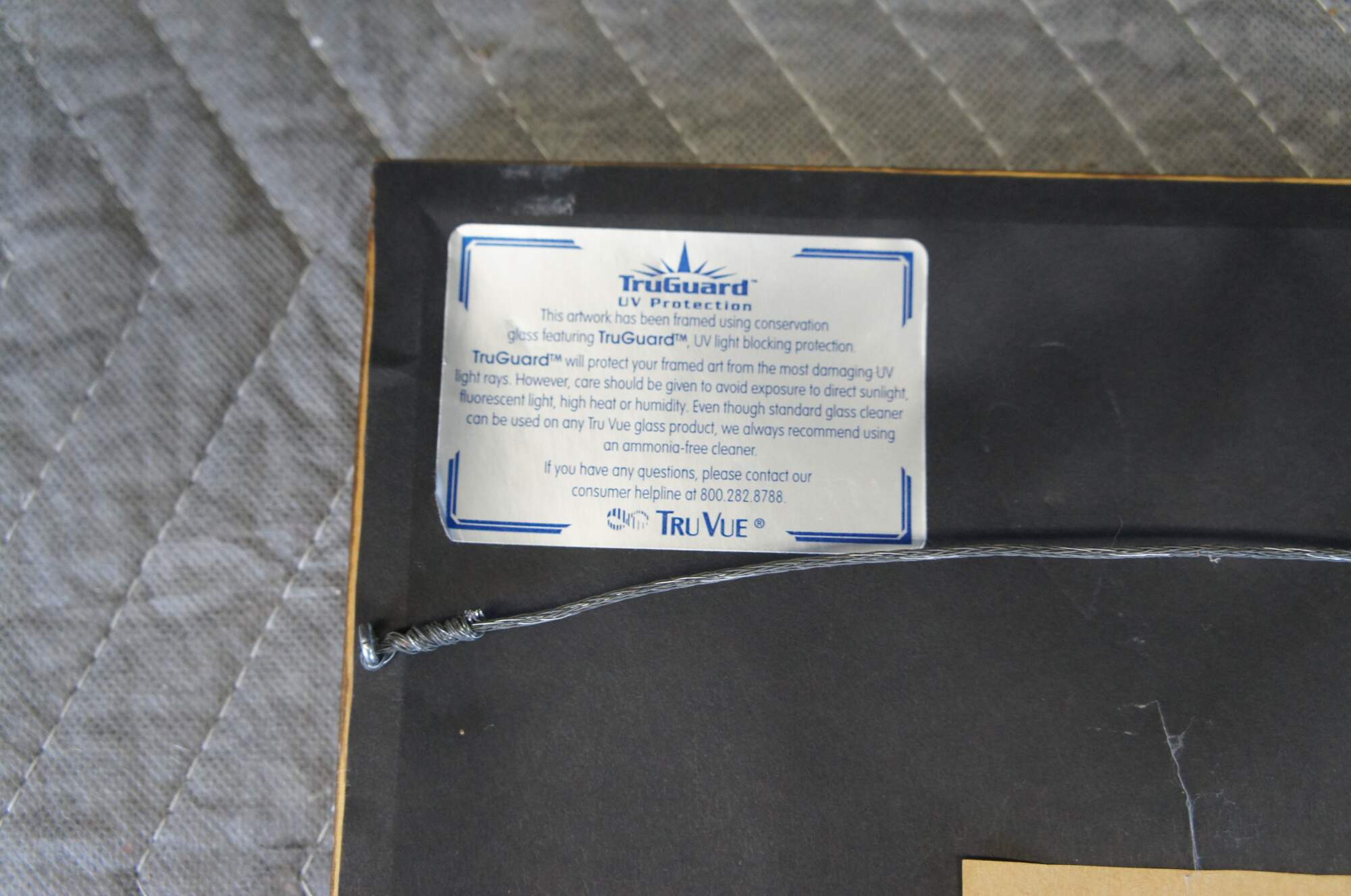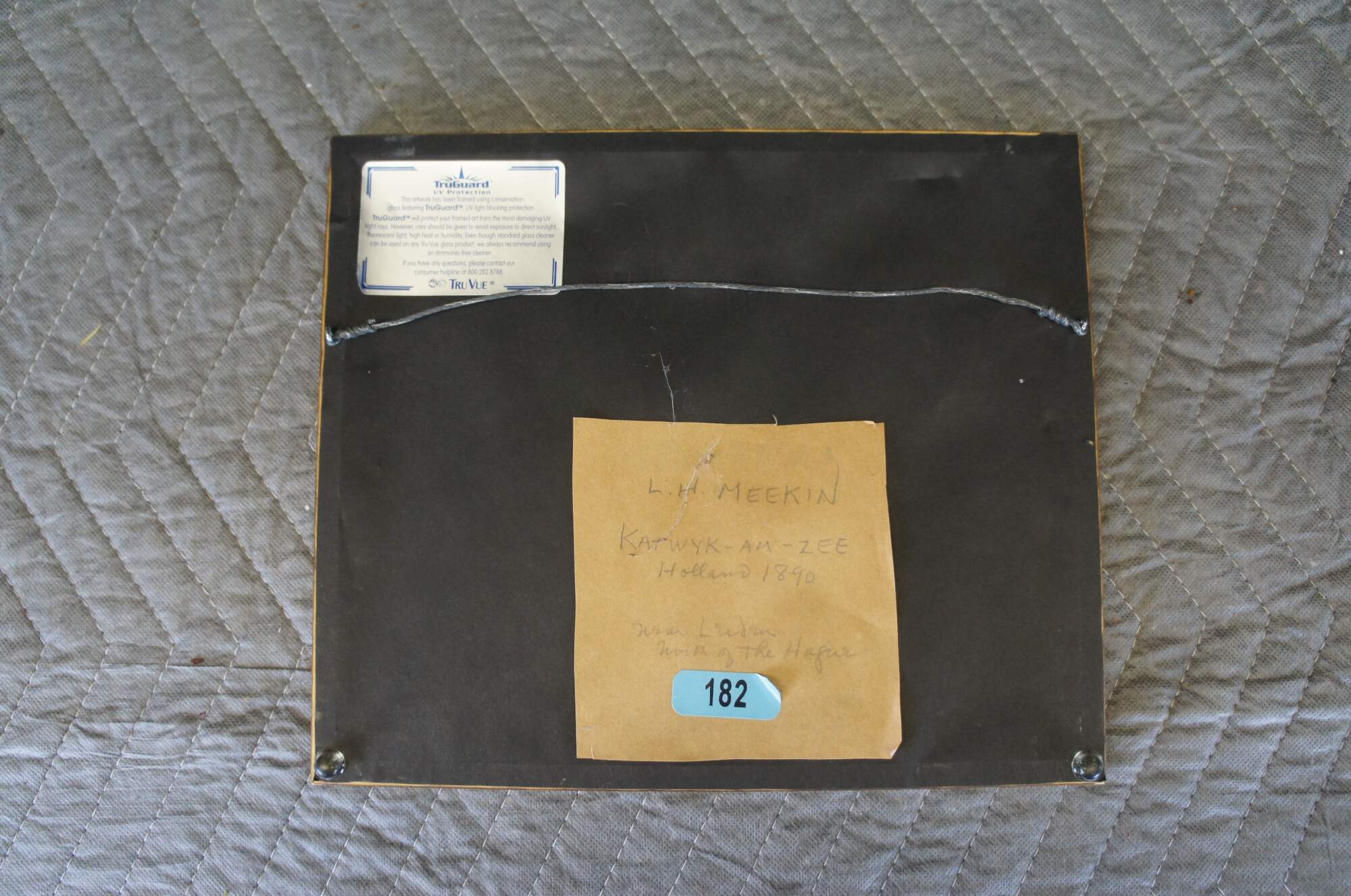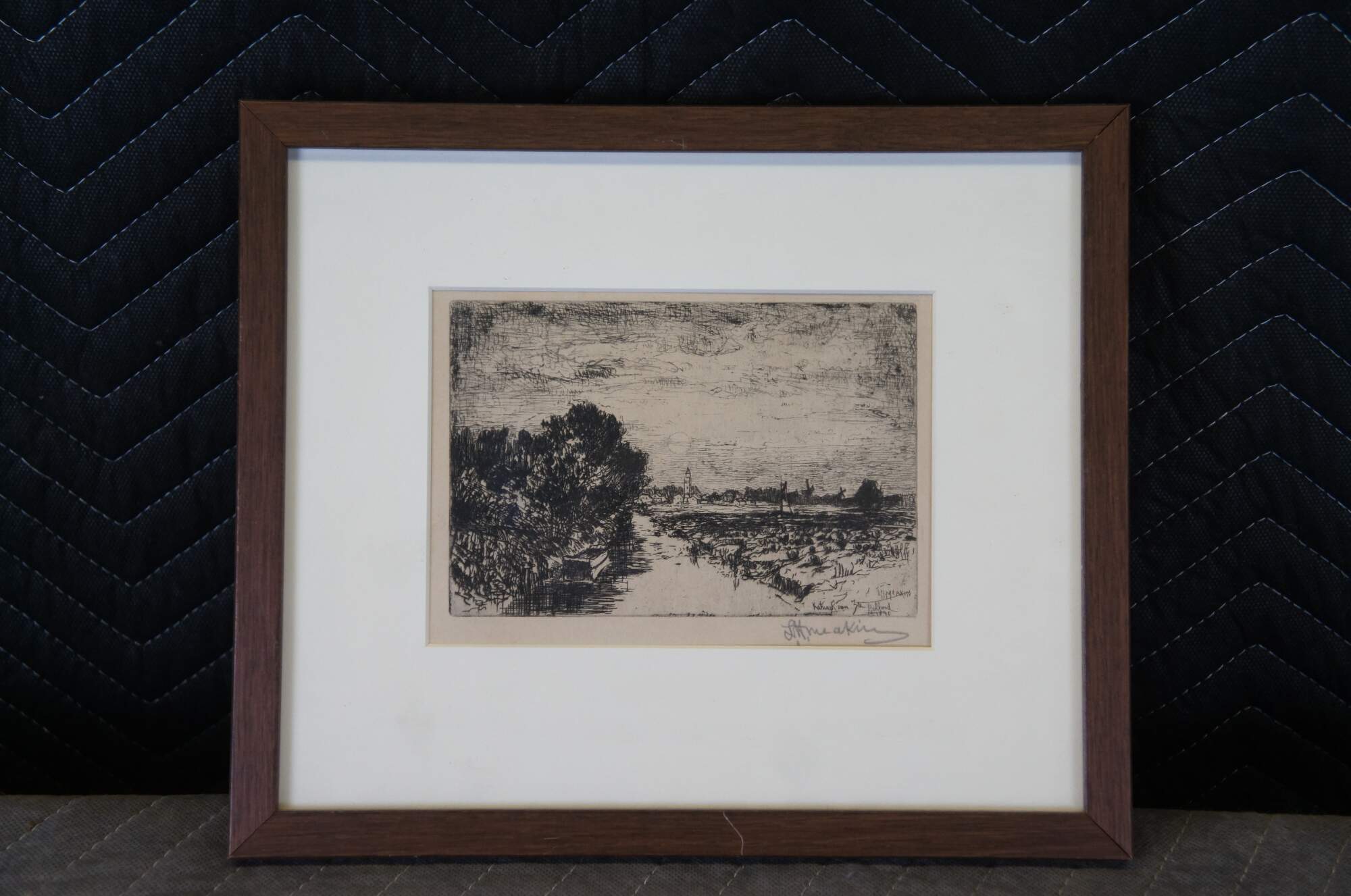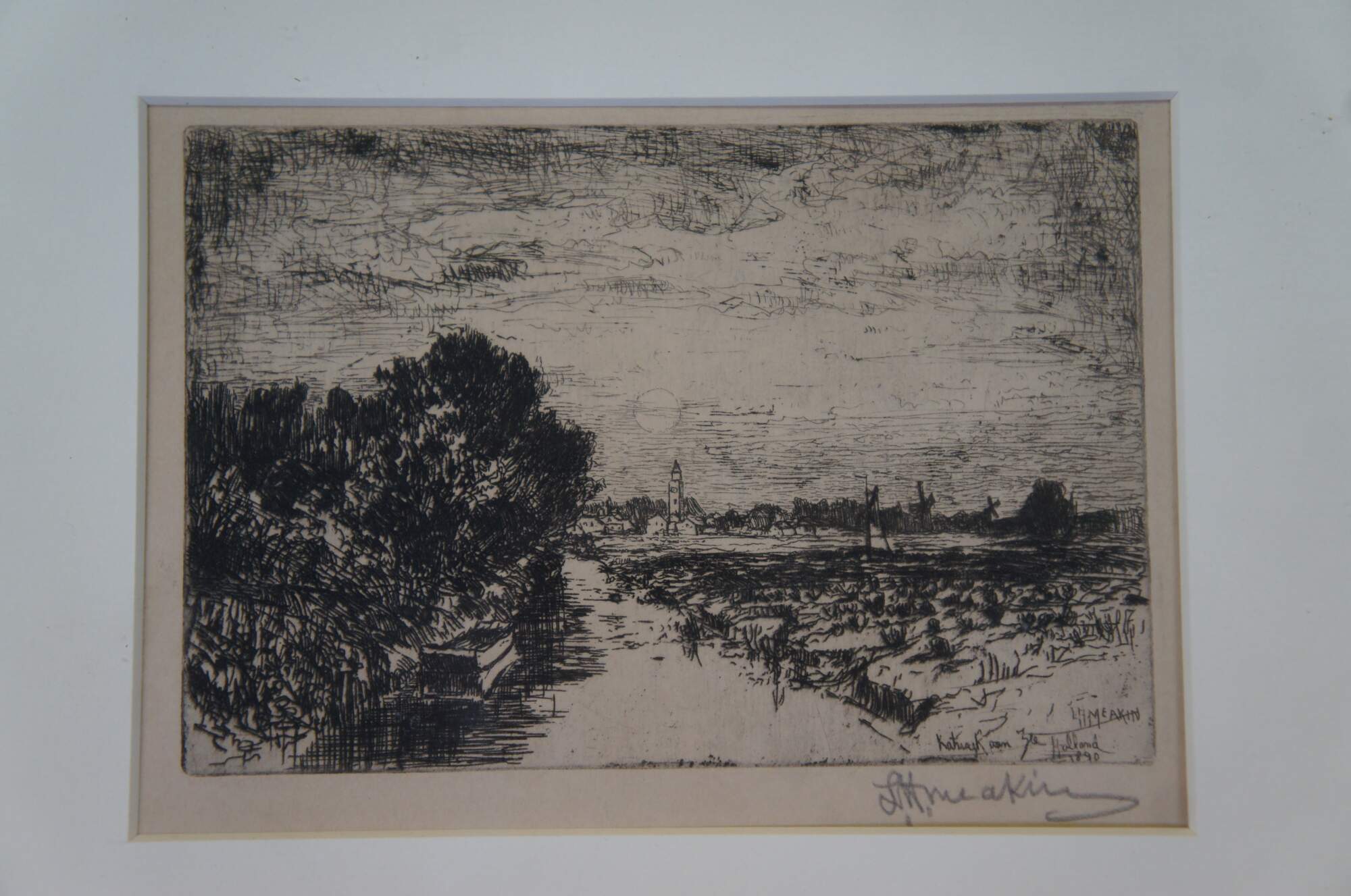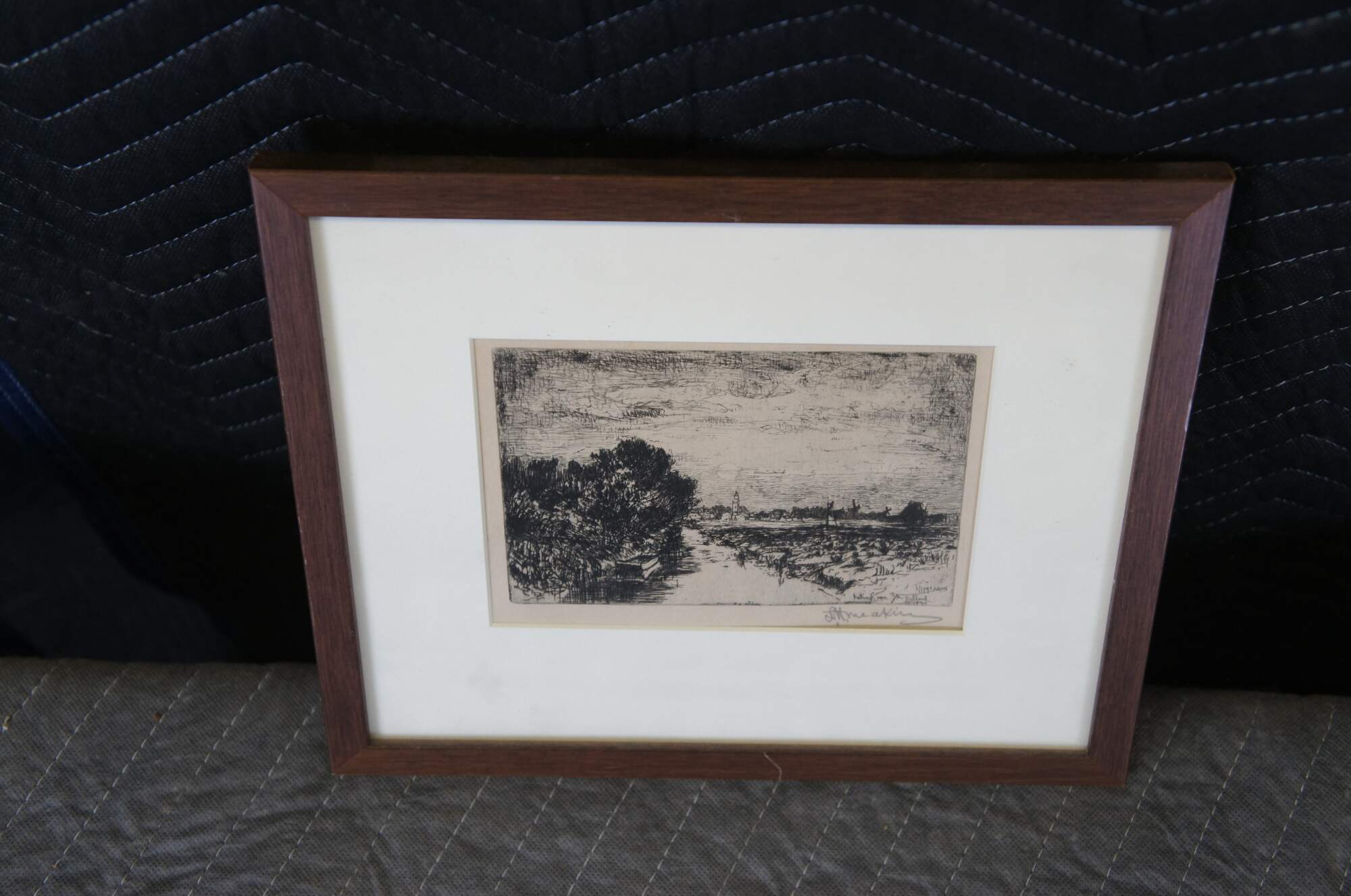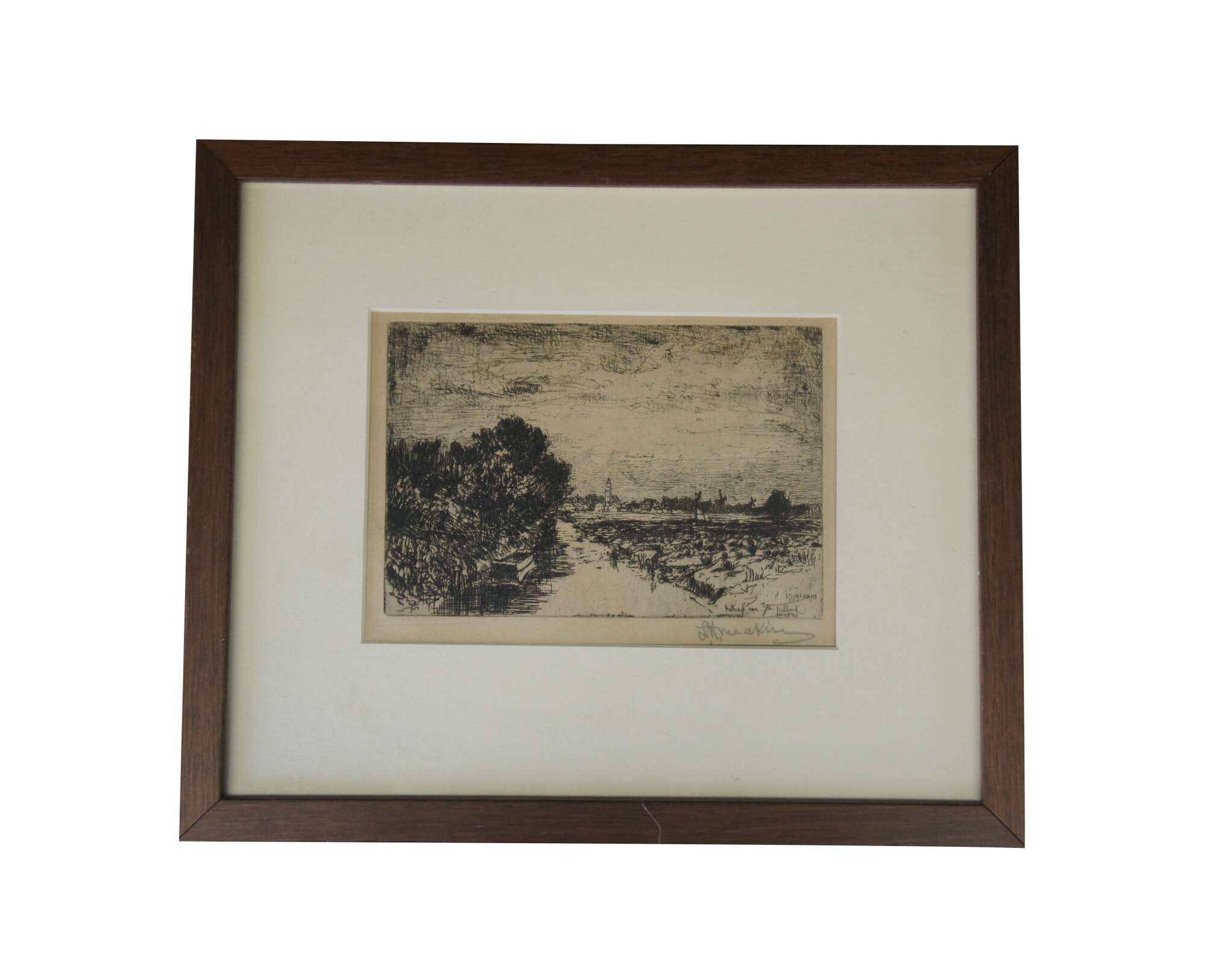
Lewis Henry Meakin Antique Signed Etching 1890 Holland Country Landscape Framed
Sold
Shipping:
Free Shipping Included
Delivery:
Estimated 2-15 Business Days
Payments:
Credit Card, Check, Cash, PayPal, Apple Pay, Venmo
Returns:
30 Days 100% Money Back Guarantee, Buyer Pays Return Shipping
Description
Born in Newcastle, England on 12 July 1850, Meakin enrolled in the McMicken School of Design at the University of Cincinnati under the watchful eye of Thomas S. Noble. Urged on by the recommendations of the Cincinnati art community to study in Munich, Meakin followed that advice and celebrated his thirtieth birthday in Europe. Here among his Cincinnati painter-colleagues, Meakin worked diligently for four years under Professors Ludwig Loefftz, Nikolaus Gysis, and Karl Raupp. Painting in the plein air method and executing works in a variety of media, including etching, Meakin made frequent sojourns to picturesque spots such as Schließheim and Augsburg. He may have urged J. Frank Currier to take up etching (Weimer, 1940, p. 459).
After further independent study in Paris and other parts of Europe, the artist returned to Cincinnati where in 1887 he accepted a teaching position at his alma mater, which became known as the Art Academy of Cincinnati. During 1893 to 1894 Meakin was back in France (Paris, Normandy, and Southern France). He met Alfred Sisley at Moret-sur-Loing and worked in Normandy with William Lamb Picknell; he must have also seen Ernest Lawson, who was with Sisley at Moret at that time. It is interesting how Meakin reported in 1893 that impressionism had influenced the Paris Salon and in America, the impressionist craze was ""very much worse"" than in France. In his letters to Joseph Henry Gest, Meakin expresses his concern that the ""excesses"" in impressionism might have a detrimental effect. On the other hand, Meakin, according to Vitz (1989, p. 292), attempted to organize an exhibition of Claude Monet's paintings in the Cincinnati Art Museum in 1893.
In 1896, when the Society of Western Artists was founded in Chicago, Meakin was a co-organizer and charter member — eventually, he became president and was affectionately known as the ""father"" of the group of painters in years to come. Meakin was given a one-man show in 1898. The painter became a frequent visitor to the coastal village of Camden, Maine, producing landscapes such as Camden Hills for which he was awarded a silver medal at the 1904 St. Louis Universal Exposition. After several summers in Maine, Meakin arranged for a permanent studio. In this eastern summer recluse, he executed some of his finest works. As an extremely prolific artist, Meakin prepared study sketches in different media — pastels and pencil sketches, in various degrees of finish. Always, however, Meakin conveyed a subjective interpretation of a scene. The artist's first efforts were moody tonalist renderings of nature and he never lost his predilection for a poetic evocation of nature, but like Twachtman, he came to apply a greater emphasis of impressionistic technique in his later years. Meakin's art contains elements of impressionism to some degree: for instance, the trees in Eden Park cast multi-colored shadows and the entire foreground is a field of painterly freedom. Throughout his oeuvre, Meakin demonstrated lively brushwork and a sunny disposition. At times, however, he is closer to Picknell and the glare aesthetic (Salt Marsh, Cape Ann, 1891, in the collection of Mr. and Mrs. William C. Rybolt).
In describing Meakin's use of broken color, one interviewer related that ""he feels that the application of color is purely a consideration of tones, playing against each other in varying keys."" (Oliver, 1907, p. 4). Among Meakin's notable credentials are membership in the National Academy, his years as an art instructor, and many awards. At the Panama-Pacific International Exposition Meakin exhibited four paintings but as Richard Boyle (1974, p. 135) noted, Meakin was ""an artist whose work is now virtually unheard of outside Cincinnati."" Meakin died in Boston, unexpectedly on the operating table, at the age of sixty-seven on 14 August 1917.
Condition
Very Good; Gently Used, light scratch to frame
Dimensions
11" x 9.5", sans 6 x 4
